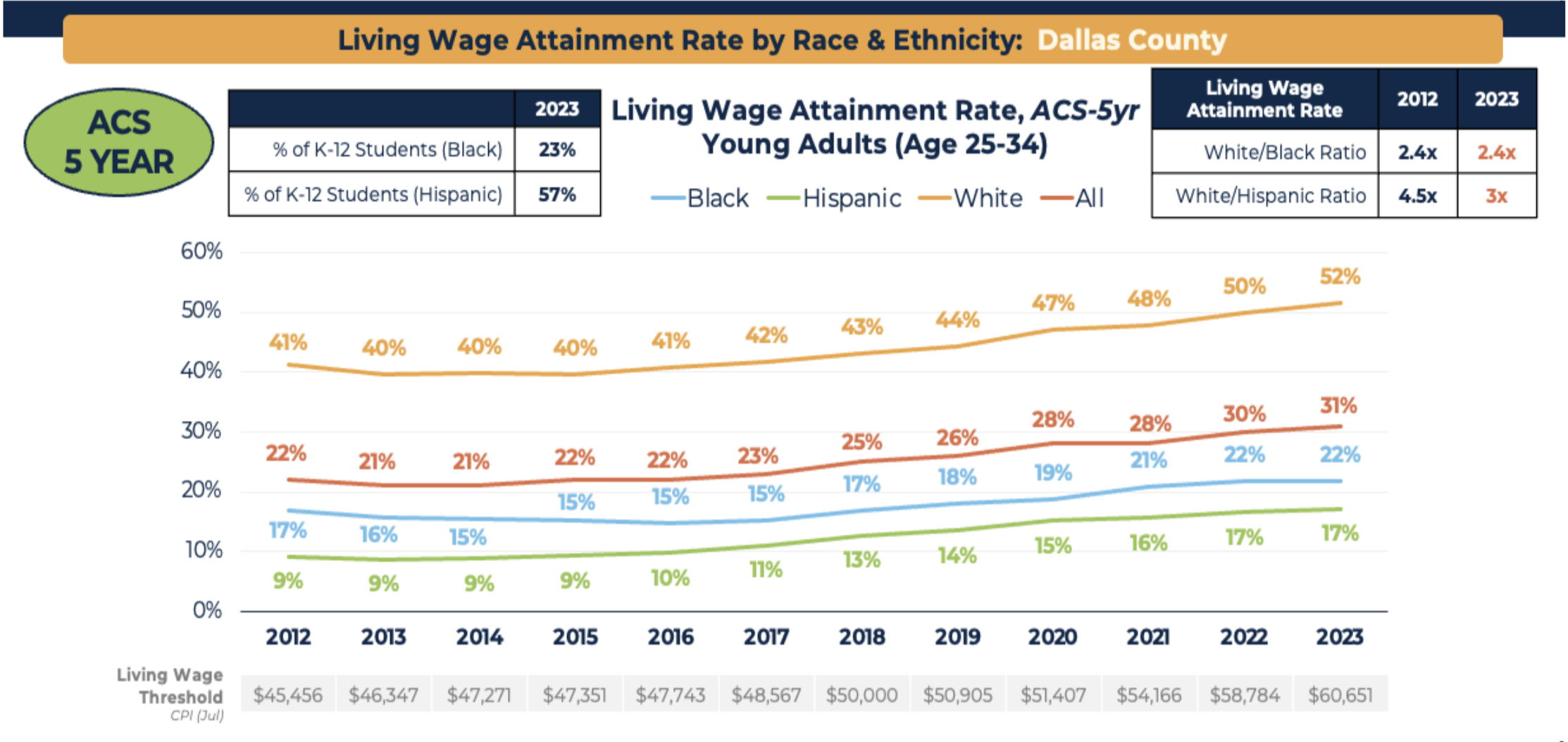Measuring What Matters: Previewing the Dallas County Economic Mobility Report




As we deepen our understanding of what contributes to achieving our goal, that by 2040 at least half of all Dallas County residents ages 25 to 34, irrespective of race, will earn a living wage, the data is revealing a powerful insight: when students are supported at critical milestones in their educational journey, long‑term economic mobility becomes not only possible but scalable.
That’s why each year we track the progress being made in Dallas County toward several key educational milestones. The Economic Mobility Report – formerly the Dallas County Scorecard – is set to be released early next week. What can Dallas County families and community members expect?
Data underscores that early interventions are most effective in driving positive lifetime outcomes. Specifically, research shows that high participation in pre‑K better positions students to read at grade level by third grade, a milestone that unlocks access to rigorous middle school math, high school persistence, postsecondary completion, and, in the long run, sustainable wages. To narrow opportunity gaps, systems must deliver effective support at every key step of the educational path.
As school systems across Dallas County apply these insights to their approach, data shows they are making a real difference. High pre-K enrollment is laying the foundation for the third grade reading milestone. Integrated college advising and support starting in middle school assist with postsecondary transitions. Partnerships with higher education institutions help students not only enroll in college, but persist, fund, and complete their degrees. And lastly, the use of real-time data helps identify and address barriers before they become long term setbacks. By learning from what’s working, and being honest about what’s not, more strategic investments can be implemented to move closer to a Dallas County where every student, regardless of race or zip code, has a real chance to thrive.
That said, significant challenges persist. Since 2018, disparities in living wage attainment for Black and Hispanic young adults have not only endured but, in certain instances, grown wider. This is especially concerning considering that Black and Hispanic students make up 80 percent of Dallas County’s K‑12 public education system.

The story the data is telling is both hopeful and sobering. In systems where economic mobility is prioritized not just in words but in practice, we see real progress. Yet in too many places, deep-rooted barriers still block students from reaching their full potential.
As these insights are used to inform strategy, the Economic Mobility Report will serve as a moment to recognize success, but more importantly provide a lens into what’s possible.
To learn more about where we stand today and where we must go next to expand living wage attainment, visit CommitData.org.







.avif)